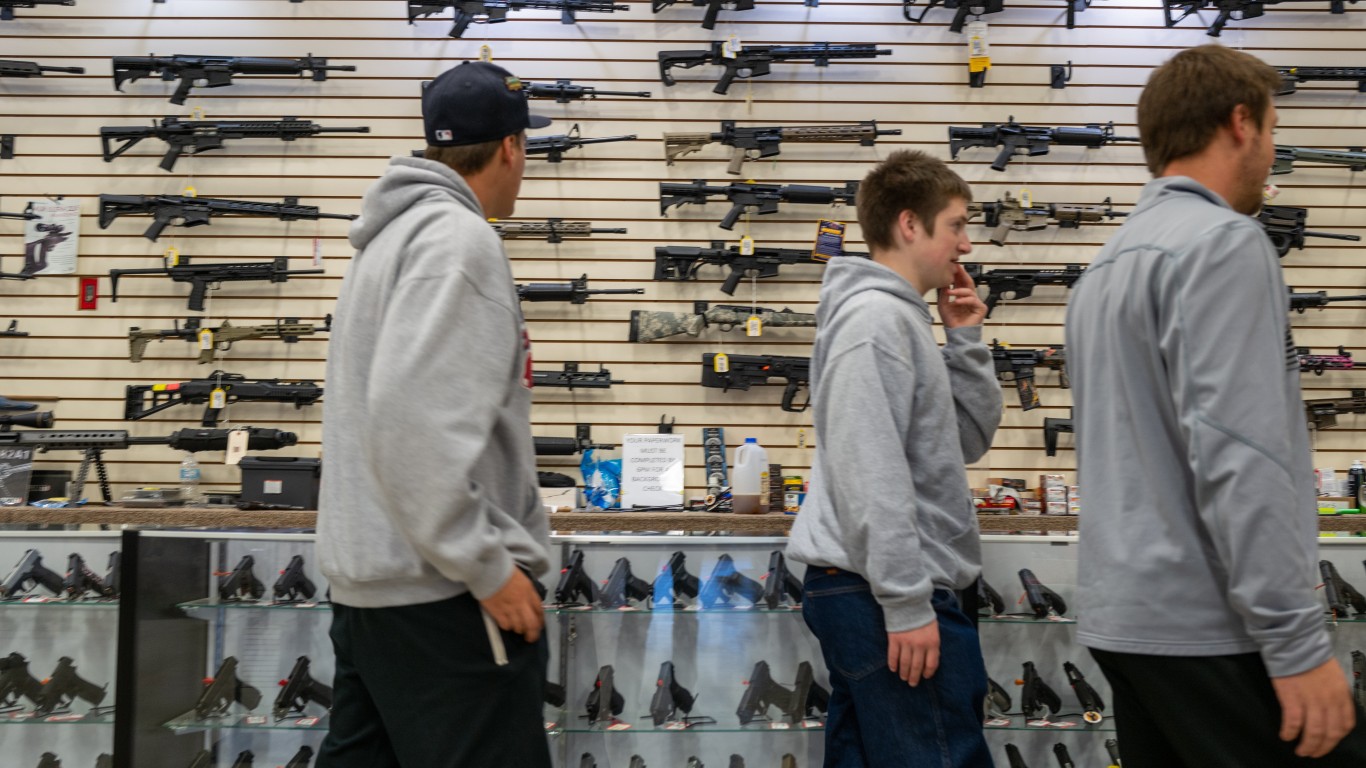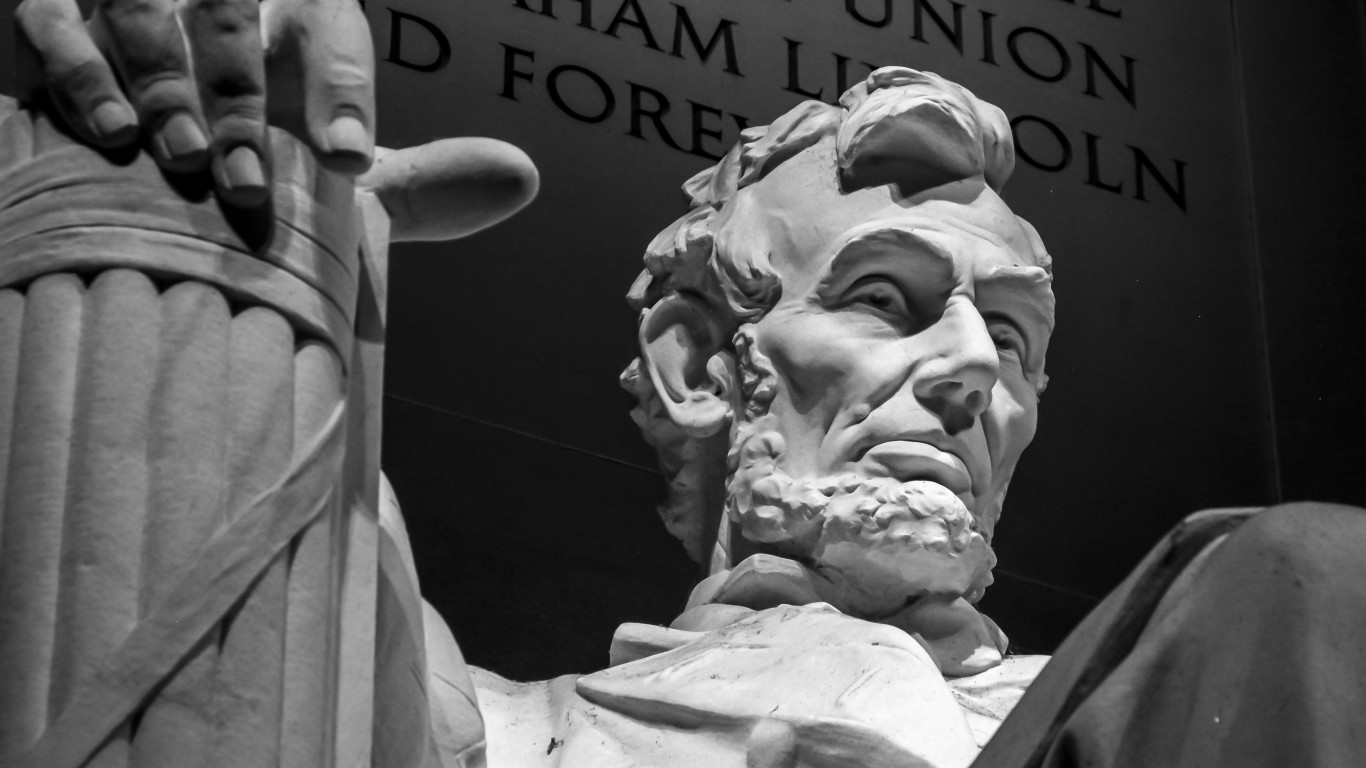
The assassination of President Lincoln was a tragedy that continues to haunt the popular imagination to this day. Some of the controversy and questions surrounding this event are still unresolved, including the fate of the 44-caliber deringer pistol John Wilkes Booth used to take the President’s life. Investors in collectibles may be particularly interested in the topic of this article, completed with research from the Ford’s Theatre Society and other historical sources.
24/7 Wall St. Insights
- The pistol that fired the fatal shot at Abraham Lincoln was kept in storage for many years.
- The government was reluctant to allow such a morbid relic to go on display.
- It has been on display in Ford’s Theatre since 1942 but it is still controversial whether weapons with such a violent history should be available for public viewing.
- Also: Discover “The Next NVIDIA
A Controversial President
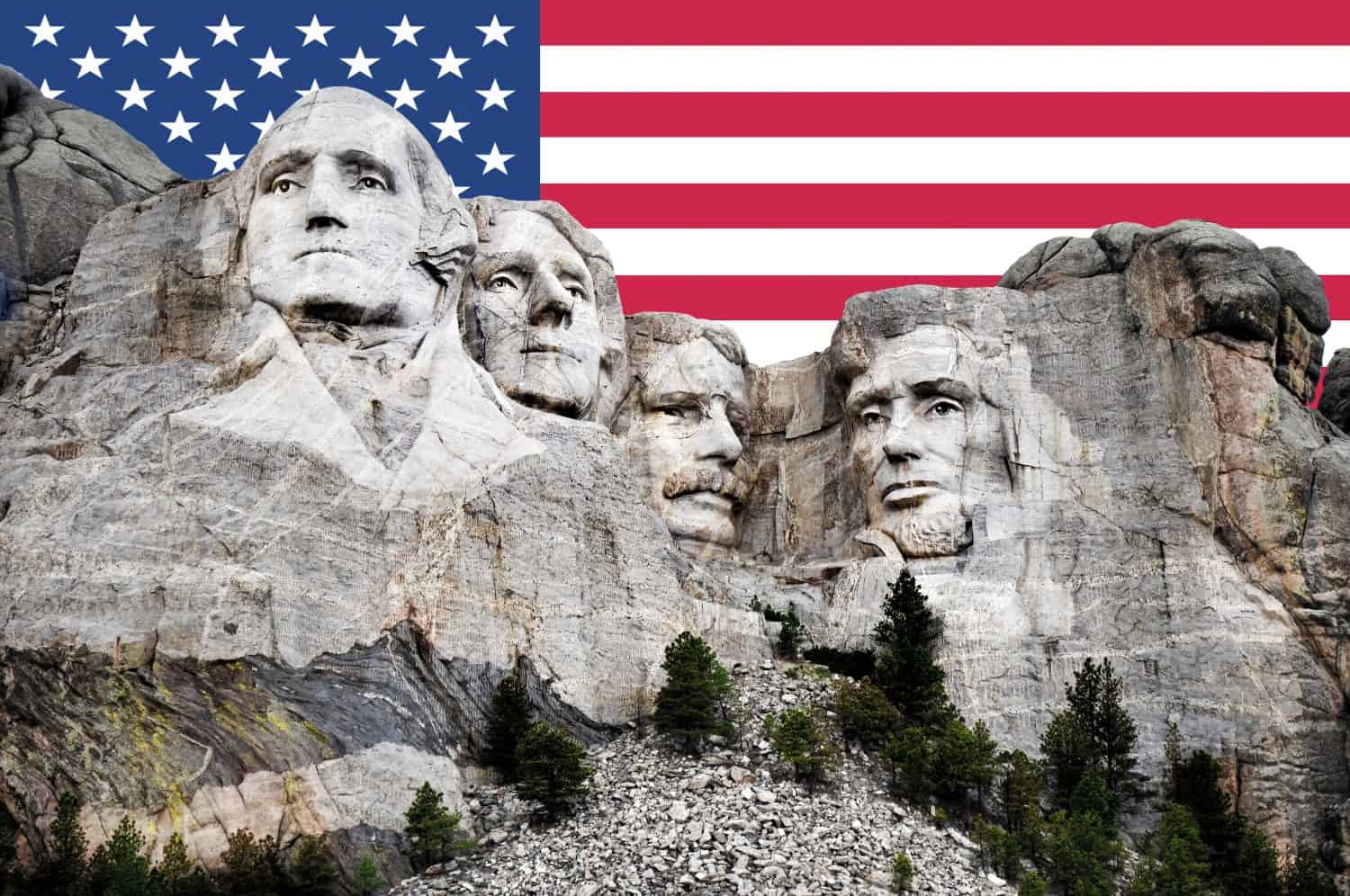
Abraham Lincoln, the 16th President of the United States, is widely viewed as one of our most effective presidents. Serving from 1861-1865, Lincoln led the country to victory in the Civil War over the Confederacy and was instrumental in abolishing slavery. Of course, this also meant there were plenty of people opposed to his policies who wished to do him harm.
A Disgruntled Actor
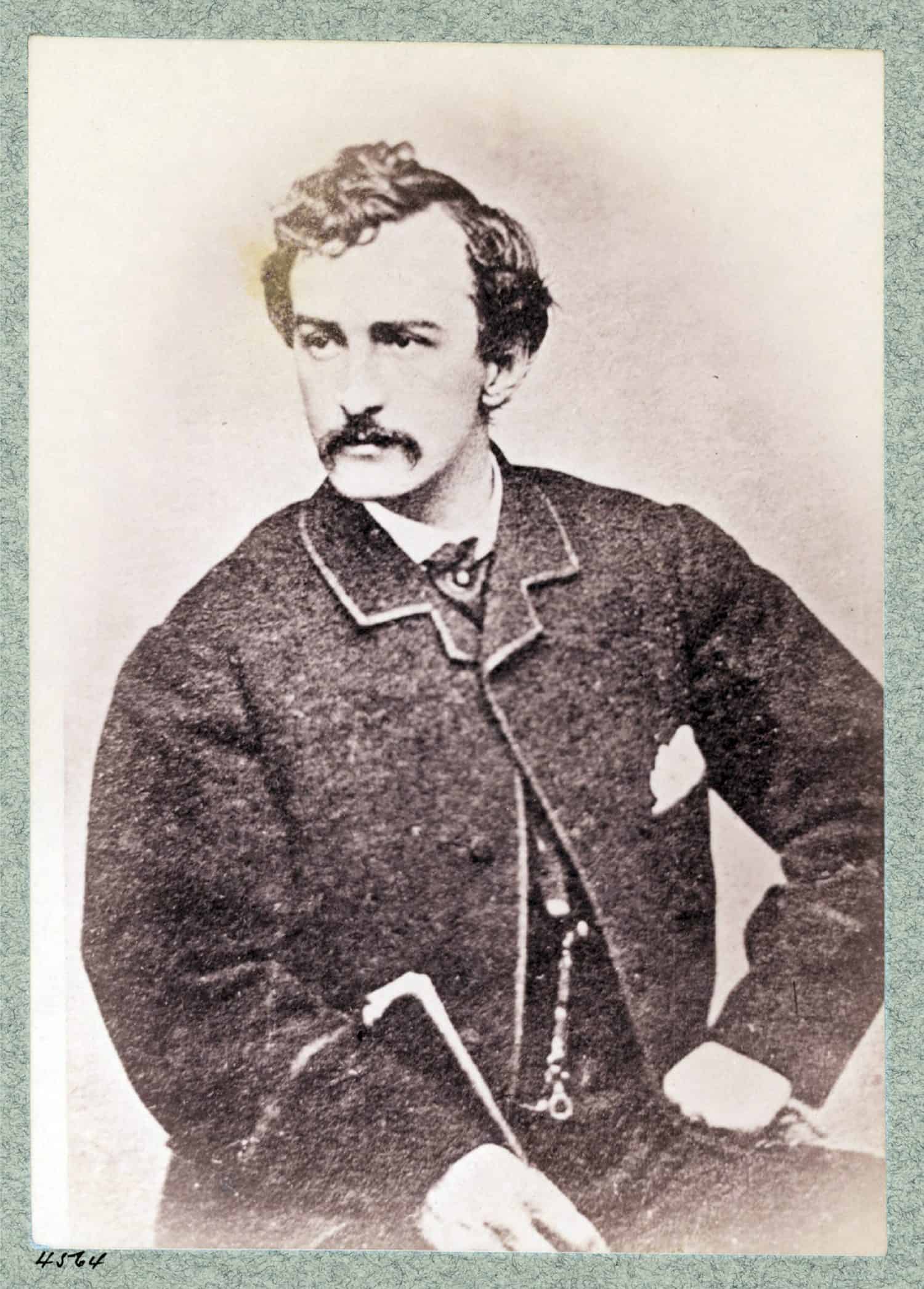
John Wilkes Booth was a well-known actor who invested and lost a substantial amount of money in the newly developing Pennsylvania oil industry. He was a native of Maryland, a slave state that the Union was able to prevent from seceding. Booth bemoaned the abolition of slavery and the South’s lost cause, thinking that if drastic action could be taken, the South could rise again.
The Assassination
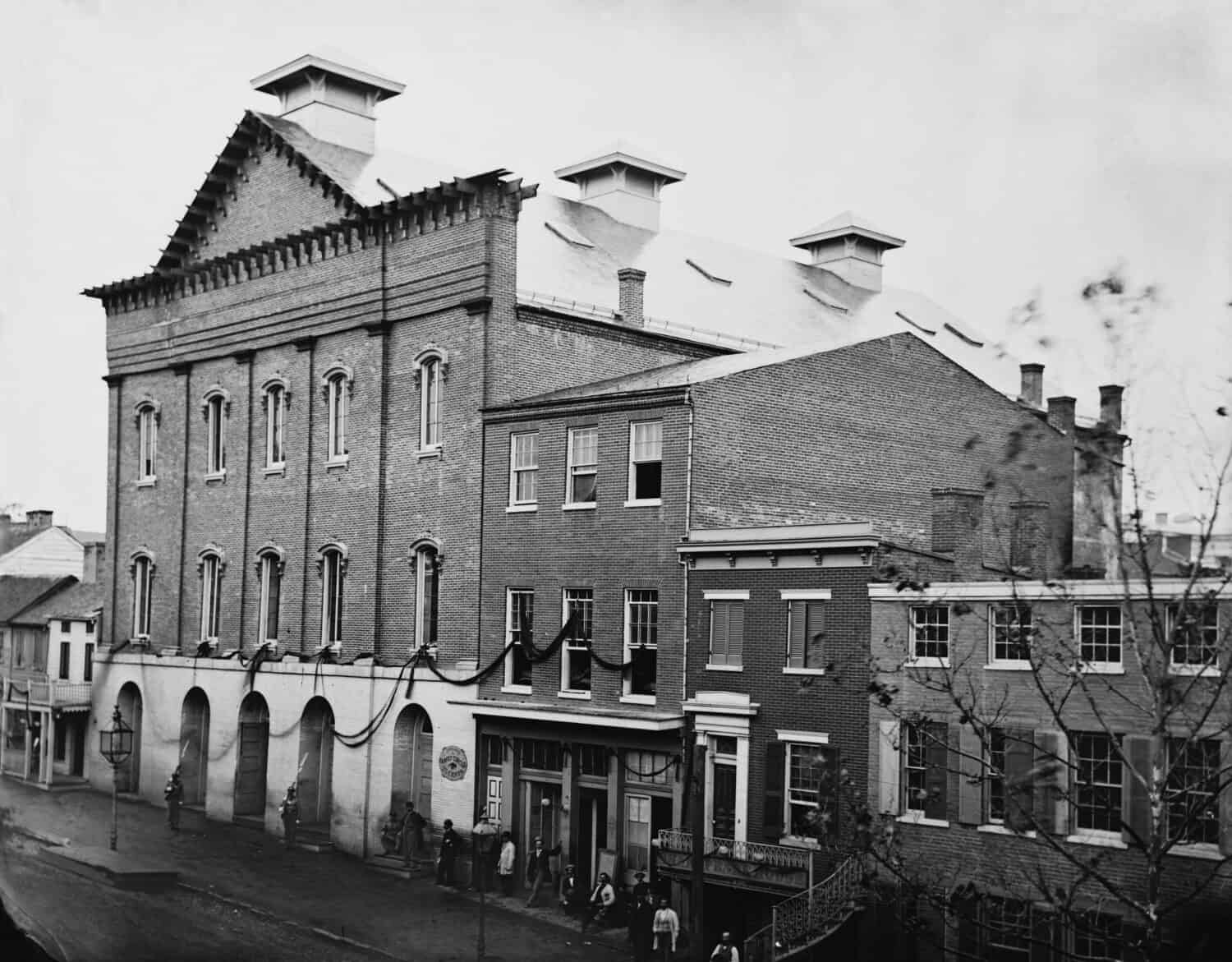
On April 14, 1865, Lincoln attended the play Our American Cousin with his wife, sharing a box with Major Henry Rathbone and his fiancée Clara Harris. At a moment of the play when the 1,700 audience members were laughing, Booth shot Lincoln in the back of the head with a deringer pistol. Rathbone struggled with him and Booth stabbed him with a knife, having dropped the murder weapon in the box. The killer jumped from the box onto the stage—a maneuver many people thought was part of the play at first, then ran out of the theater and escaped on a horse while pandemonium broke out behind him.
Booth’s Fate
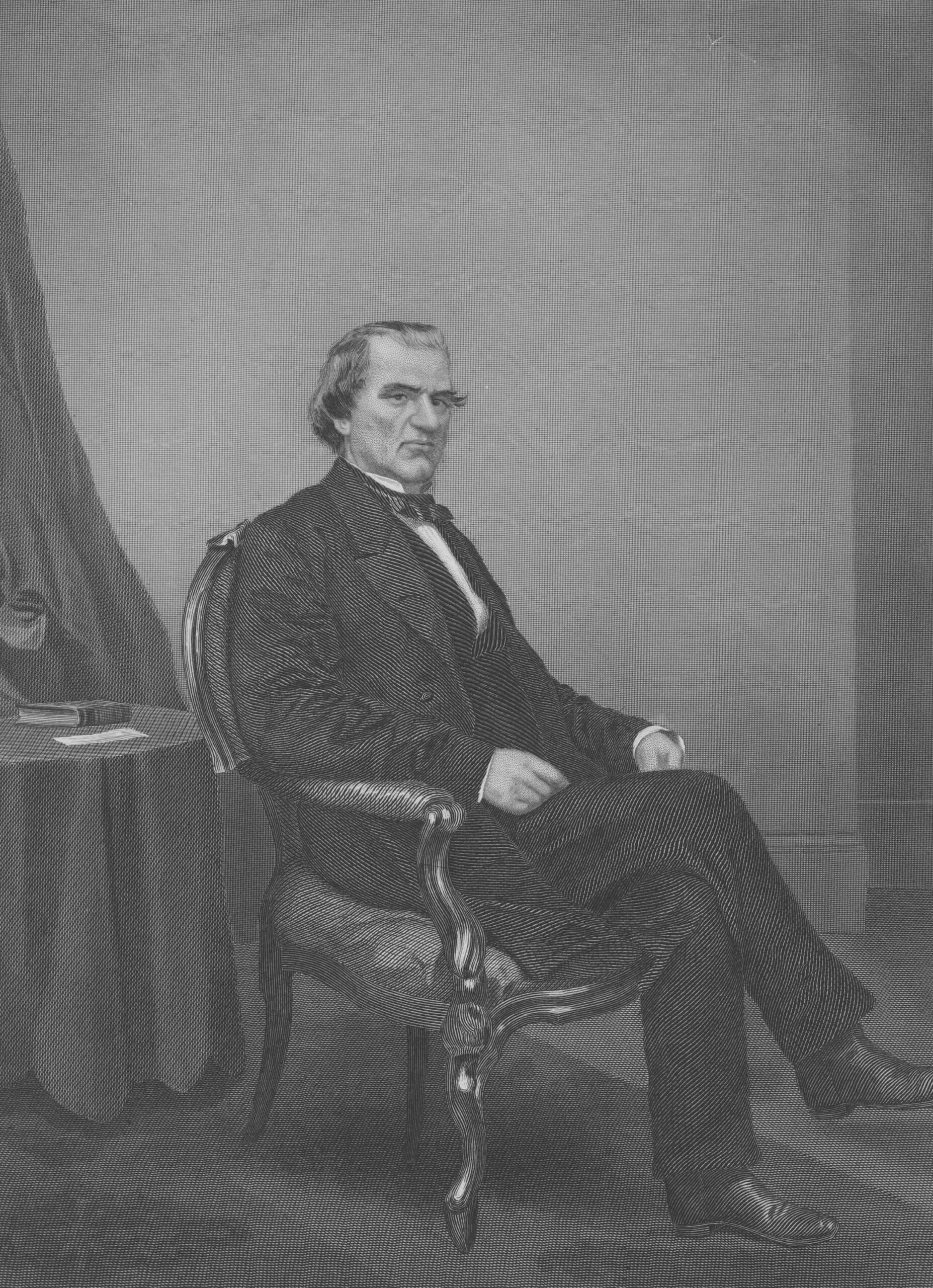
On April 26, Booth was tracked down to a barn where he was hiding. The surrounding soldiers set fire to it to flush him out. When he emerged from the back door, a soldier crept up behind him and shot him in the back of the head, as he had done to the President. The other 8 conspirators were arrested; one of them was tracked down all the way to Egypt. Four were hanged, one died in prison, one was released, and two were pardoned by President Johnson.
Public Display? No Way!
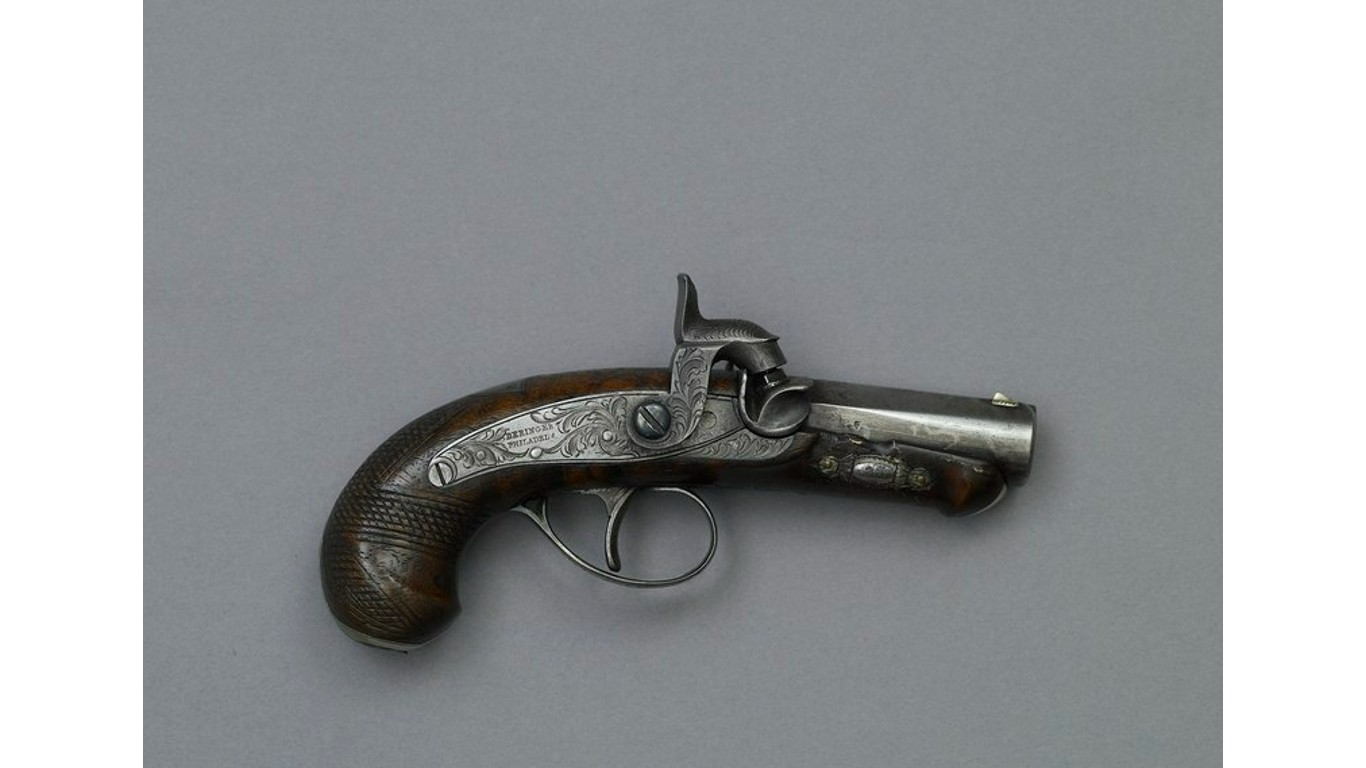
After being presented in evidence at the trial, Booth’s derigner was put in storage under the control of the U.S. Army Judge Advocate General. In 1925, the Smithsonian Institution requested that it be turned over to them for safekeeping and public display, but the request was sharply denied. The answer was repeated in 1931 when Lieutenant Colonel Ulysses S. Grant III, the grandson of Civil War General (and later President) Grant, asked that the gun be displayed to the public at Ford’s Theatre.
What’s the Problem?

The Adjutant General explained in a letter to Grant: “The relics should not be displayed to the public under any circumstances, on the theory that they would create interest in the criminal aspects of the great tragedy, rather than the historical features thereof, and would have more of an appeal for the morbid or weak-minded than for students of history. […] the Lincoln relics should not be placed upon exhibition anywhere.”
Under New Management
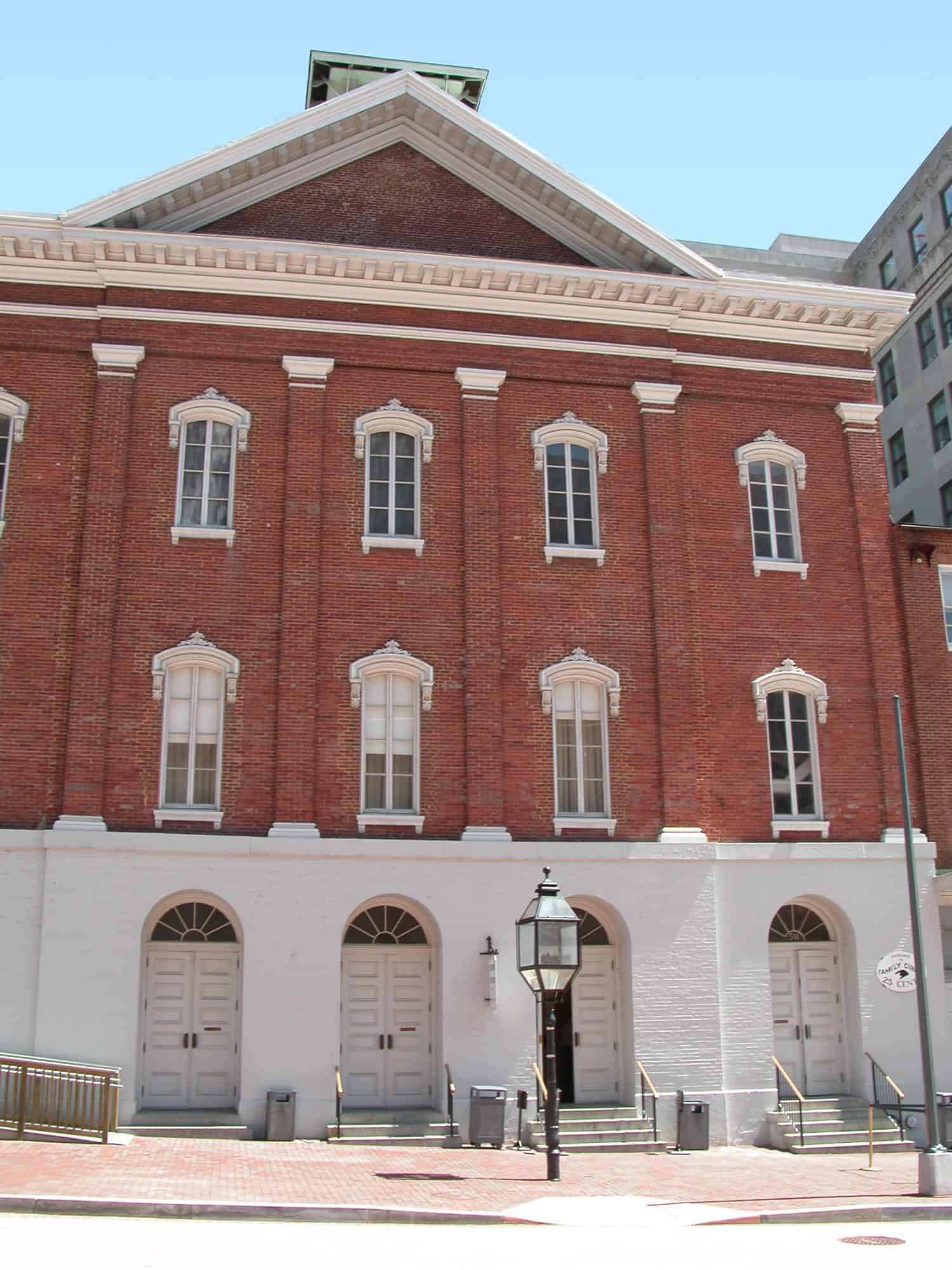
In 1940 the War Department got rid of the whole problem by turning the pistol and other conspirator trial artifacts over to the National Park Service, which was now administering Ford’s Theater. The superintendent of the Lincoln Museum allowed impersonal artifacts, like Booth’s keys, maps, and diary to go on display but not personal artifacts like the bullet and skull fragments, which went to the National Museum of Health and Medicine. The murder weapon was considered borderline but was eventually put on display in 1942.
An Ongoing Controversy
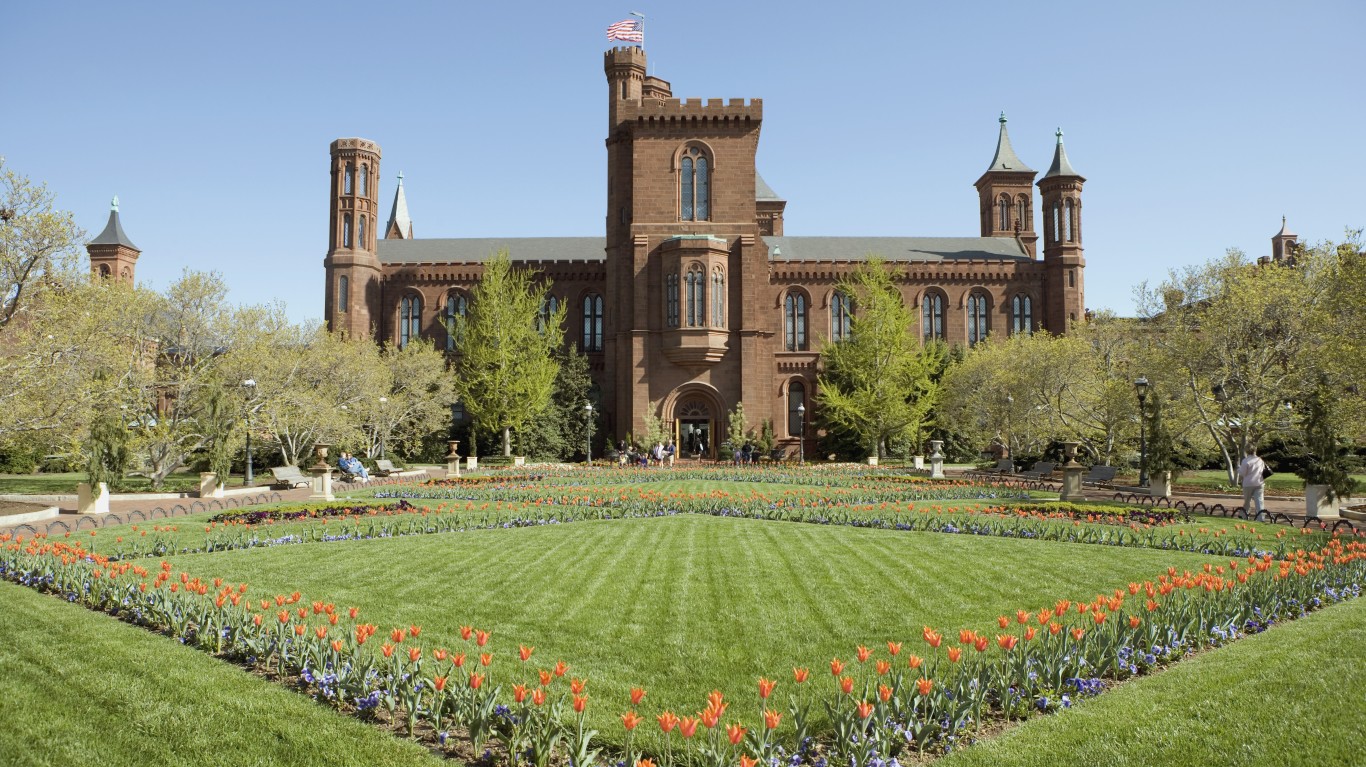
The deringer is still on display at Ford’s Theatre, to the curiosity of some guests and the horror of others. Since it is an antique weapon at this point, perhaps some of the morbidity of it is lost on modern viewers. The administration at Ford’s is keen to make sure the pistol is not displayed in a way that glorifies it or treats it reverentially but places it in the context of the harm it did. Visitors are given the opportunity to give their responses online to the question “How should museums display weapons of violence”?”
Are You Still Paying With a Debit Card?
The average American spends $17,274 on debit cards a year, and it’s a HUGE mistake. First, debit cards don’t have the same fraud protections as credit cards. Once your money is gone, it’s gone. But more importantly you can actually get something back from this spending every time you swipe.
Issuers are handing out wild bonuses right now. With some you can earn up to 5% back on every purchase. That’s like getting a 5% discount on everything you buy!
Our top pick is kind of hard to imagine. Not only does it pay up to 5% back, it also includes a $200 cash back reward in the first six months, a 0% intro APR, and…. $0 annual fee. It’s quite literally free money for any one that uses a card regularly. Click here to learn more!
Flywheel Publishing has partnered with CardRatings to provide coverage of credit card products. Flywheel Publishing and CardRatings may receive a commission from card issuers.
Thank you for reading! Have some feedback for us?
Contact the 24/7 Wall St. editorial team.
